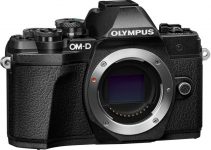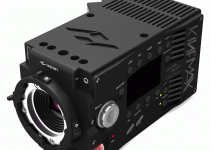Panasonic’s GH5 series of cameras are popular amongst video shooters thanks to their fantastic features and specs. They use Micro 4/3’s lens on a smaller sensor which has its pros and cons. The recent release of the Panasonic S1 has many wondering if Panasonic will soon forsake its most popular line in favor of the new full frame ‘upgrade’.
One area where the S1 should outshine its GH5 family members is low light performance as a larger sensor gathers more total light. So let’s have a look at this quick test to see how the ISO performance holds up among the 3 cameras.
Before we go any further I have a confession to make – I am an ISO pedant. It grates on me to hear people say, “I-S-O” as they do in this video. So let’s be clear – it is pronounced “Eye-So”. ‘ISO’ does not stand for ‘International Standards Organisation’.
It is a little confusing but if you would like to read about the correct pronunciation of these important 3 letters visit this handy link – and then you too can annoy your friends by correcting them incessantly.
Rant over and on to the camera tests.
There are a few factors to consider when undertaking this kind of ISO test on these cameras – sensor size, crop and native ISO’s – and sure enough, these factors can account for the differences in the cameras.
Firstly, all 3 cameras perform well at low ISO, as they should. Clean, crisp images up to ISO 800. Good start.
The GH5 starts to become quite noisy at ISO 3200, so backing down to ISO 1600 seems like the maximum point to reach.
Up steps the video-optimized GH5s with a nice party trick – Dual Native ISO. This means that the GH5s sensor has 2 sets of ISO circuitry, each optimized for a different range of ISO. The ‘Low ISO’ range from 80 – 800 and the ‘High ISO’ range from 800 – 51200.
This means that the GH5s still has a usable, clean image at ISO 6400 and 12800. Above that and the GH5s becomes noisy but that is a full 3 stops better than the GH5 which is impressive. This is a cool feature carried over from higher-end cameras like Panasonic’s own EVA1.
The GH5s tops out at ISO 51200, unless you are using the extended ISO feature, but expect noisy and then very noisy images after 12800.
The S1 also has a max ISO of 51200 but at 25600 it is still clean and usable – so that’s 1 stop better than the GH5s. Also noted in the video is that the S1 picture is sharper than the GH5s – perhaps a topic for a future video.
It is also worth noting that the S1 is set to 4K, 30fps for these tests. When switched to 4K, 60fps the image crops in and as expected, the noise in the image increases. It essentially becomes a smaller sensor and at ISO 25600 the image is noisy.
These are the kinds of tests that can have a valuable real-world impact on your shooting. Knowing how far you can push your ISO to get good exposure will empower you when filming to capture your best footage.
It’s also my belief that a noisy shot is better than no shot at all so if needs be I will push the ISO beyond where I might like but keep in mind that I can use additional noise reduction software in post. NR comes as standard in many NLE’s but Neat Video is still a go-to plug-in.
I also entirely agree with Griffin in the video that story is more important than anything else and most viewers are not looking for technical perfection. The short film ‘Argon’, linked at the end of the video, is a really nice demonstration of the Panasonic S1’s crisp, clean video and I recommend you give it a watch.
[source: Griffin Hammond]
Order Links:
Panasonic Lumix DC-S1 Mirrorless Digital Camera (B&H, Amazon)
Panasonic Lumix DC-GH5 Mirrorless Micro Four Thirds Digital Camera (B&H, Amazon)
Panasonic Lumix DC-GH5S Mirrorless Micro Four Thirds Digital Camera (B&H, Amazon)
Disclaimer: As an Amazon Associate partner and participant in B&H and Adorama Affiliate programmes, we earn a small comission from each purchase made through the affiliate links listed above at no additional cost to you.



